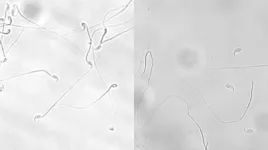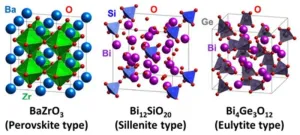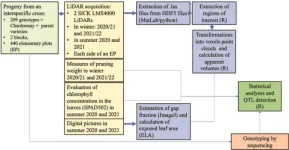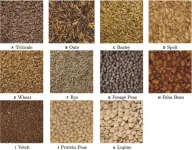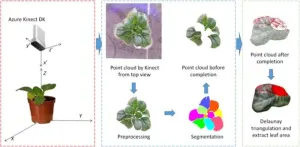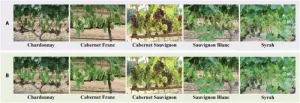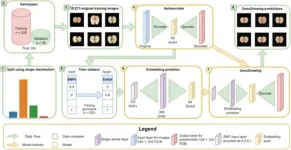(Press-News.org) 200 US communities will fail to transition to 100% renewable energy by 2050 despite their pledges to do so, according to a new study published in IOP Publishing’s journal Environmental Research: Infrastructure and Sustainability.
The study shows that by 2050 gas will firmly remain the primary source of energy in the US given that the current infrastructure plans for implementing renewable energy cannot provide sufficient energy output. Recent projections suggest that renewable energy generation will need to triple to meet even a 45% share of energy production. The results indicate that in many instances renewable energy is used as an additional source to meet growing energy needs, instead of a transitional tool away from fossil fuels.
The study provides a unique insight into the energy consumption on a city level based on an energyshed framework. An energyshed is a holistic framework covering a geographic area that contains the land, infrastructure, people, profits, and environmental impacts and how these elements impact energy consumption.
Based on this method the researchers at Baylor University examined a cross section of US cities including Boston, Washington D.C., Salt Lake City, Columbia, and San Diego that have committed to adopting fully renewable energy sources by 2050, finding that these cities are predicted to meet just 10% of their targets in the next 30 years.
Dr Kayla Garrett, author of the study and Postdoctoral Fellow in Environmental Science at Baylor University, says: “The Energyshed method shows that while the need for this transition is clear, the best pathways to achieve it are greatly debated. Many areas are faced with conflicting sustainability goals such as changes to infrastructure, energy storage, land and resource use, biodiversity, economic development, and more. This can lead to ‘analysis paralysis’ which is one of the major blockers for decisive action to reduce greenhouse gas emissions.”
Garrett continues: “The energysheds approach shows much overlap between the needs and goals of neighbouring communities and how they can work together. This knowledge can foster cooperation for funding, land acquisition, infrastructure, distribution, and storage for renewable energy. Conversations are needed between those who apply the market approach to supply and demand versus those with sociopolitical approaches.”
END
When energy doesn’t add up: 200 US cities will fall short of sustainable energy goals despite pledging to transition to renewable sources by 2050
2024-01-18
ELSE PRESS RELEASES FROM THIS DATE:
Felix Beuschlein announced as new Editor-in-Chief of the European Journal of Endocrinology
2024-01-18
The European Society of Endocrinology (ESE) is pleased to announce that the new Editor-in-Chief of our flagship journal, the European Journal of Endocrinology (EJE), is Professor Felix Beuschlein, M.D. He will assume his post in May 2024 when the current Editor in Chief, Professor Wiebke Arlt, steps down.
Professor Philippe Chanson, Chair of ESE’s Publications and Communications Committee said, “I am delighted that Felix will be the next Editor in Chief of ESE’s flagship journal and will continue to build on the strong foundations laid by his predecessors. Felix’s internationally ...
Missing gene could explain infertility
2024-01-18
Mice lacking a certain gene are unable to produce offspring because their sperm lack the connection between the tail and the head. A new thesis from the University of Gothenburg indicates a probable cause of male infertility.
Researchers at the University of Gothenburg have identified a new protein, dubbed by them as “MC2”, that plays a crucial part in the formation of swimmable sperm in mice. This protein is needed to create a functional connection between the head and the tail of the sperm.
“The connection is located in the ‘neck’ of the sperm head and facilitates coordinated movement and function ...
Scientists uncover new marine source of carbon emissions into atmosphere, finding bottom trawling contributes to global warming
2024-01-18
(WASHINGTON, DC) 18 JANUARY 2024 — Bottom trawling is a previously unaccounted for source of atmospheric carbon emissions, scientists reveal in a study published today. As the world scrambles to slash emissions caused by fossil fuels, deforestation and other sources, the study finds bottom trawling — the act of dragging a heavy fishing net across the ocean floor and resuspending some of the carbon in the seafloor sediment — to be a significant source of atmospheric carbon pollution. A previous study found that part of that disturbed ...
Light it up: reimagining the optical diode effect
2024-01-18
Osaka, Japan – At the heart of global internet connectivity, optical communications form an indispensable foundation. Key to this foundation are optical isolators, created by combining multiple components. The result is a complex structure that transmits light in only one direction, to prevent damage to lasers and minimize noise by avoiding the reversal of light. However, some magnetic materials have an optical diode effect – an unconventional nonreciprocal absorption of light manifested by the material itself. This effect leads to a change in transmittance depending ...
Machine learning method speeds up discovery of green energy materials
2024-01-18
Fukuoka, Japan – Researchers at Kyushu University, in collaboration with Osaka University and the Fine Ceramics Center, have developed a framework that uses machine learning to speed up the discovery of materials for green energy technology. Using the new approach, the researchers identified and successfully synthesized two new candidate materials for use in solid oxide fuel cells – devices that can generate energy using fuels like hydrogen, which don’t emit carbon dioxide. Their findings, which were reported in the journal, ...
Revolutionizing grapevine phenotyping: harnessing LiDAR for enhanced growth assessment and genetic insights
2024-01-18
In response to the pressing need to reduce pesticide usage and adapt grapevine varieties to climate change, there's an unprecedented effort to phenotype new genotypes using high-throughput methods. Teams globally are developing advanced systems, employing technologies like multispectral cameras and LiDAR, to assess growth traits, photosynthetic capability, and other architectural parameters. However, traditional methods remain time-consuming and less efficient for large-scale studies. The current research gap lies in effectively employing LiDAR technology ...
AI-driven nutritional assessment of seed mixtures enhances sustainable farming practices
2024-01-18
Cultivating seed mixtures for local pastures is an age-old method to produce cost-effective and balanced animal feed, enhancing agricultural autonomy and environmental friendliness in line with evolving European regulations and organic consumer demands. Despite its benefits, farmers face adoption challenges due to the asynchronous ripening of cereals and legumes and the difficulty in assessing the nutritional value of heterogeneous seeds. Current practices rely on informal, empirical methods, and a proposed solution is to develop a mobile app or online service, similar to Pl@ntNet, for automated nutritional evaluation of seed mixtures, ...
Revolutionizing plant phenotyping: deep learning and 3D point cloud technology in overcoming reconstruction challenges
2024-01-18
The 3-dimensional point cloud technology revolutionizes non-invasive measurement of plant phenotypic parameters, offering vital data for agriculture and research. Current research focuses on overcoming the limitations of 2.5D imaging and occlusions. Methods such as structure from motion, multi-view stereo, and advanced active 3D reconstruction techniques are being explored for this purpose. However, issues persist with incomplete data acquisition and the inaccuracy of phenotypic parameter extraction due ...
Revolutionizing grape yield predictions: the rise of semi-supervised berry counting with CDMENet
2024-01-18
To improve grape yield predictions, automated berry counting has emerged as a crucial yet challenging task due to the dense distribution and occlusion of berries. While grape cultivation is a significant global economic activity, traditional manual counting methods are inaccurate and inefficient. Recent research has shifted towards deep learning and computer vision, employing detection and density estimation techniques for more precise counts. However, these methods grapple with the variability of farmland and high occlusion rates, leading to significant counting errors. Additionally, creating high-performance ...
GenoDrawing: pioneering plant phenotyping with autoencoders and SNP markers
2024-01-18
Advancements in whole-genome sequencing have revolutionized plant species characterization, providing a wealth of genotypic data for analysis. The combination of genomic selection and neural networks, especially deep learning and autoencoders, has emerged as a promising method for predicting complex traits from this data. Despite the success in applications like plant phenotyping, challenges remain in accurately translating visual information from images into measurable data for genomic studies.
In November 2023, Plant ...


